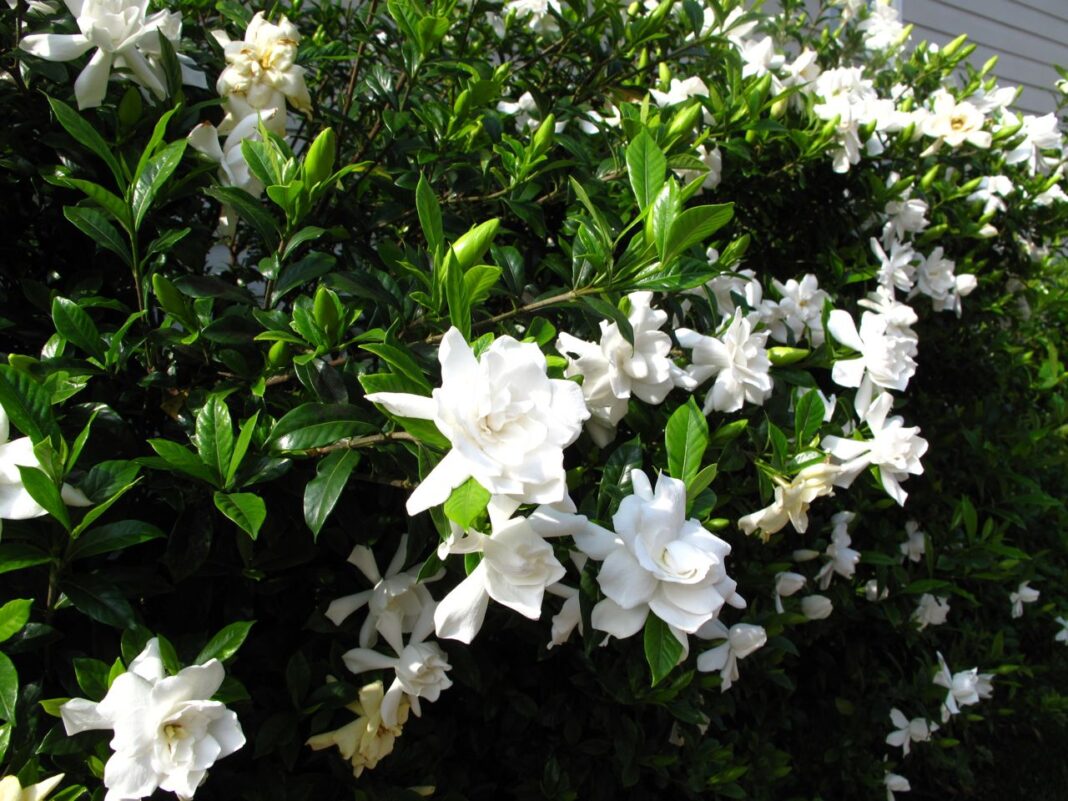By Lori Murray, Cameron County Master Gardener, Texas Superstar Specialist
A list of my favorite flowers would have to include the gardenia. From its soft creamy petals and glossy leaves to its incredible fragrance, it’s surely one of the most appealing flowers ever. The flighty side of my writer’s mind associates it with warm romantic nights in the Old South, and when we built our current home, I envisioned a hedge of gardenias that would provide its wonderful scent to the patio.
Imagine my shock and frustration when the only thing these wondrous plants did was turn yellow and drop leaves! This was years ago, before the internet-at-our-fingertips provided so much know-how, but I dutifully asked questions everywhere I could and received and followed all sorts of suggestions. I tried a myriad of remedies, but the one I remember best involved spraying the bushes with concentrated iron, after dutifully waiting for a calm day (in the Valley!!?) since the concoction was not to be sprayed on a windy day.
Nothing worked and my dream of a glorious hedge of fragrant flowers died. Then I went to the home of a friend for a meeting and there – outside the front door – was one of the largest and most beautiful gardenias I had ever seen. When asked what they did to raise such a brilliant specimen, my hostess offhandedly replied, “Oh, we just throw the coffee grounds on it!” Thus began my love affair with coffee grounds and all things organic – and what they could do for gardenias of course.
Plant gardenias outdoors in the spring or the fall and put them where they will receive partial sunlight throughout the day. Mine are on the south side under an overhang, in plenty of filtered light, but you could also put them in morning sun so long as you don’t subject them to intense heat.
Space them as directed in the information that came with them or ask at the nursery before you bring them home. Spacing will vary with the projected size of the mature plant. The soil should be rich and well drained. (I add compost once or twice a year.) Mulch the plants to assure moisture retention and inhibit weed growth, and plan to water them well. The woody nature of mature plants makes them require plenty of water so the ground should be moist but not soggy when you finish. No plant likes to sit in water.
During the dormant late fall months here, prune any brown or overgrown branches so that nutrients will circulate through the plant. It’s tricky because if you prune too late you won’t get the new growth needed for blooms, but if you prune too early your plant can be nipped by cold weather. Fertilize with an acidic plant food in the very early spring after the threat of really cold weather has passed.
If you use a fertilizer mixed in water take care not to splash it on the leaves of the plant; keep it on the ground around the bush. Some articles recommended sprinkling ¼ – ½ cup blood meal or fish emulsion around the base of the gardenia every two to four weeks during the blooming season. The gardenia requires a little extra care, but it is one of the most rewarding of all plants when it blooms.




